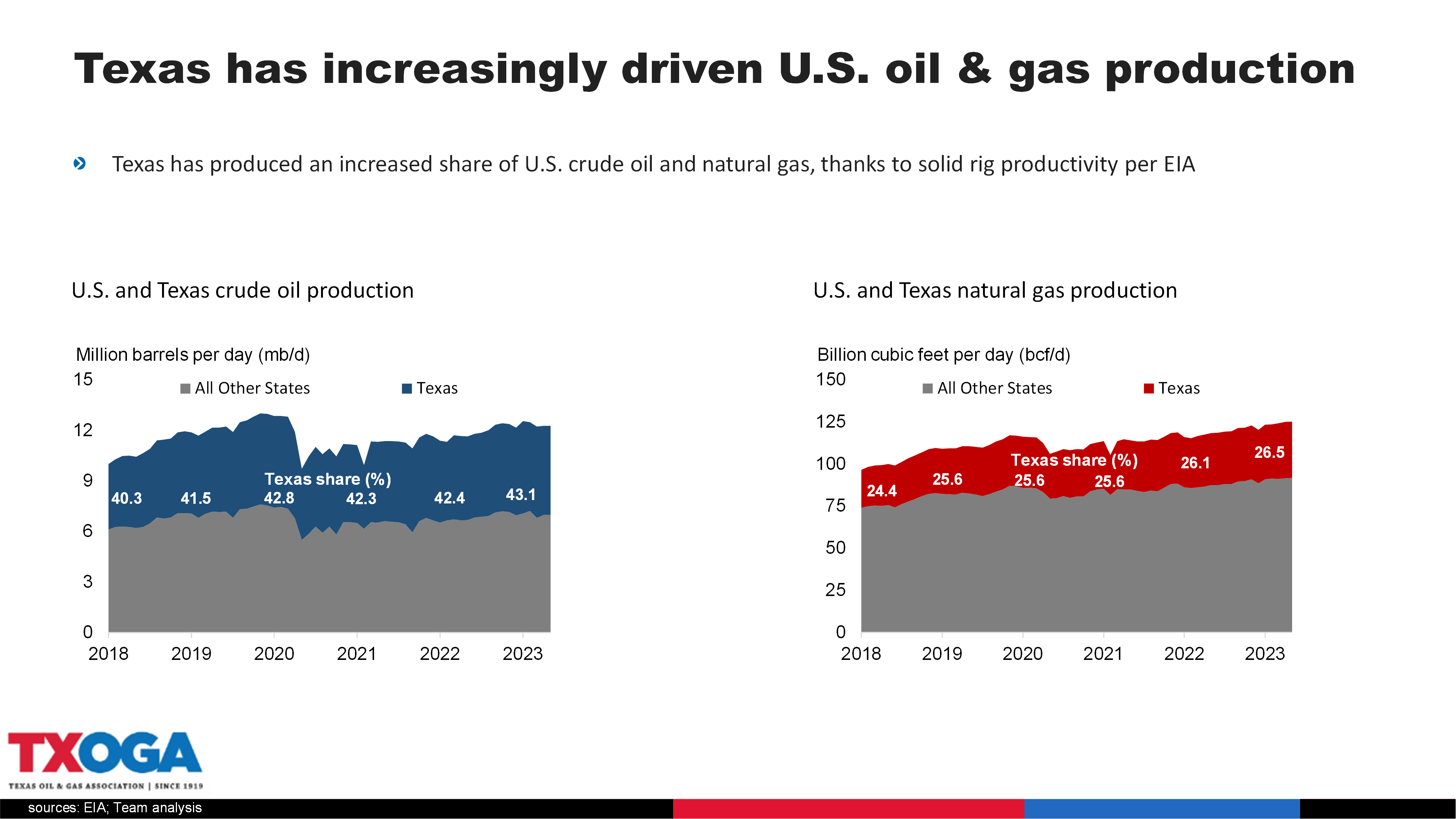AUSTIN – The Dallas Federal Reserve Bank recently reported in May that Texas’ economic expansion has slowed, and the business outlook has weakened. While an accurate reading of economic statistics, a broader context offers reasons for optimism, according to a newly released analysis from Texas Oil & Gas Association (TXOGA) Chief Economist Dr. Dean Foreman.
Texas’ economy led the nation’s growth for the two most recent quarters, growing at an average annual pace of 7.6% (or more than 2.5 times the U.S. average) over the latter half of 2022 per the Bureau of Economic Analysis (BEA).
“What goes up, must generally come down,” said Foreman. “A slowing expansion is both typical and healthy following periods of rapid expansion.”
Excluding the post-pandemic rebound, Texas’ past two quarters are the state’s best performance since late 2014 and early 2015–and Texas ended 2022 with a new record-high state GDP of $1.92 trillion.
A detailed look into industry drivers shows that the sources of the state’s strength are even clearer, with Texas’ real GDP achieving a record high of $1.92 trillion in Q4 of 2022, making it the fastest growing state over the second half of 2022.
Per the BEA, over 70% of real growth in the second half of 2022 was driven by oil and natural gas-related industry segments, and industry direct employment rose by 8.3% year-over-year (y/y) to 477,327 in Q4 of 2022, generating $13.8 billion in wages per Texas Workforce Commission (TWC) data.


Similar to 2014-2015, the oil and natural gas-related sectors of Texas’ economy contributed strongly and drove over 70% of real growth over the latter half of 2022. The recent oil and gas expansion has also brought significant gains in employment and wages, to the tune of +8.3% y/y in job growth and +11.0% y/y in wage growth in Q4 2022. This growth occurred despite oil prices that were on par with their median since 2006, adjusted for price inflation, which is an indication that Texas has become a relatively more important energy source.
Specifically, Texas’ shares of U.S. oil and gas production have risen to over 43% of U.S. crude oil production and 26.5% of natural gas production.
A potential sign of slowing, however, stems from recent reports that drilling rig counts decreased by 7.7% year-to-date in Texas – to 347 active rigs as of June 9 from 376 rigs as of December 30, 2022, per Baker Hughes.
However, by comparison, rig counts fell by 23.8% in Colorado, 36.2% in Oklahoma, and 15% in Wyoming over the same period.
Consequently, Texas oil and natural gas has fared relatively well at the same time, as the state’s production levels of oil and natural gas have achieved new record highs so far in 2023 per the U.S. Energy Information Administration (EIA).
“These signs of both absolute and relative strength amid broader economic uncertainties are encouraging indicators that Texas oil and gas will drive growth going forward,” said Foreman.
“Texas continues to set new records and the oil and natural gas industry is the pacesetter for more employment, better wages, and increased revenues to fund our universities, roads and first responders,” said TXOGA President Todd Staples. “When oil and natural gas does well, all Texans benefit. However, growth is not guaranteed, and some signs of slowing are occurring. Continued thoughtful discussions with state leaders about sound policy are needed to encourage more investment and growth and to pave the way for future opportunities.”
+++
Founded in 1919, TXOGA is the oldest and largest oil and gas trade association in Texas representing every facet of the industry.

